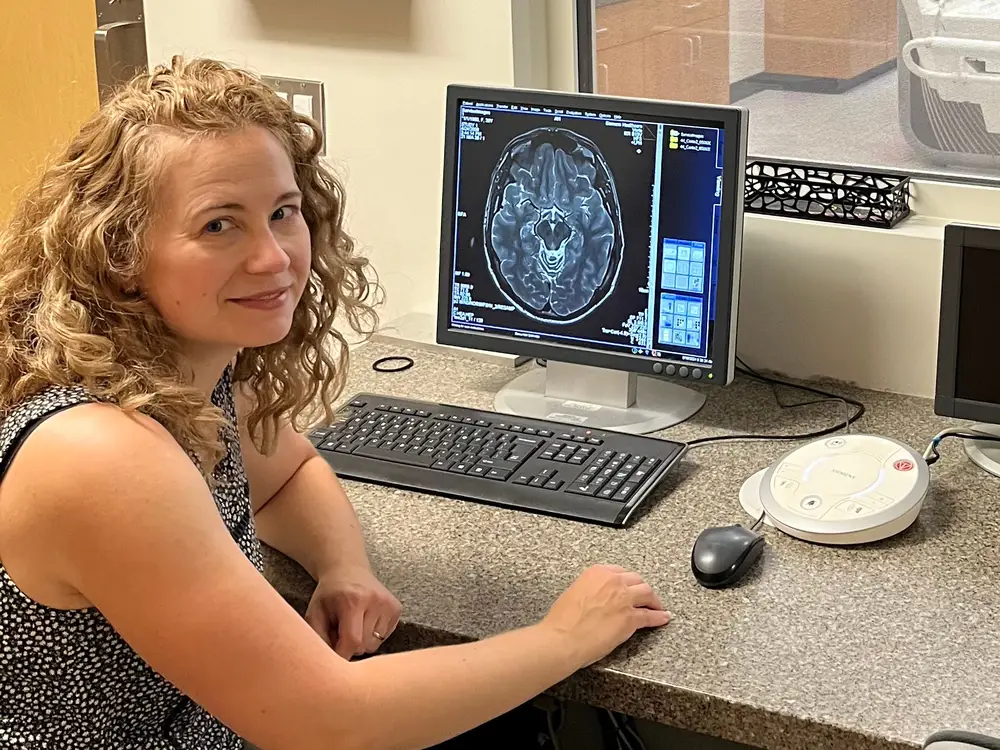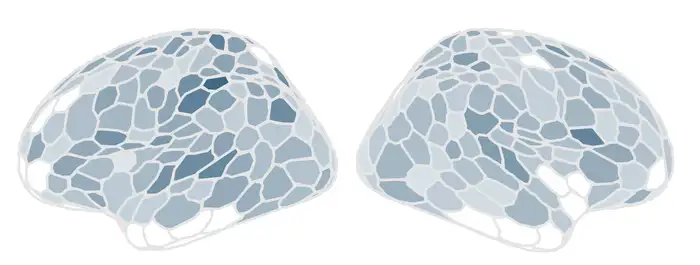Groundbreaking brain scans explain the ‘mommy brain’ phenomenon

Liz Chrastil looking at an MRI of her brain.
For how common the phrase “mommy brain” is, we still don’t know much about how pregnancy, birth, and postpartum alter a person’s brain.
“It’s shocking that in 2024, there’s so little information available to us,” Dr. Liz Chrastil, 43, a neuroscientist and associate professor at UC Irvine, told B-17.
It’s what inspired her to scan her own brain when she was pregnant at 38.
With the help of a team of researchers, Chrastil underwent 26 MRIs, spread out between three weeks before she conceived and two years postpartum. The results were published in Nature Neuroscience on Monday.
Her team noticed structural changes in her brain, such as a reduction in gray matter and an increase in white matter, some lasting up to two years after giving birth. Still, “this study brings up more questions than it answers,” Chrastil said.
“We think that these have some beneficial use to them, but we don’t necessarily know what they are,” she added. “It might be useful to the mother to be able to have better bonding or caregiving to the infant.”
While she said more research is needed to understand these changes, the study reveals just how profound pregnancy and postpartum are to brain development.
She lost gray matter in most parts of her brain

The regions of Chrastil’s brain impacted by gray matter changes.
In the brain, gray matter refers to areas with large concentrations of neurons and plays a huge role in cognitive and emotional functioning.
Chrastril said about 80% of the regions in her brain experienced a decrease in gray matter, averaging a 4% decrease. The findings were consistent with past studies on gray matter reduction during pregnancy, which can last up to two years postpartum.
Reduced gray matter is associated with health risks like depression. While Chrastil “didn’t feel too bad” during pregnancy, she said further studies with more participants could help with treating conditions like postpartum depression.
Her brain increased connectivity

A diagram of the white matter tracts in Chrastil’s brain.
Chrastil was most surprised by the improved connectivity in her brain, which peaked during the second and third trimesters and “returned back to baseline” after birth.
“We had no idea that that was going to be there,” she said. White matter, the parts of brain cells that connect to other neurons in fiber bundles, is linked to improved learning and focus.
Chrastil and her team purposefully didn’t look at the data while she was undergoing the study, so as not to influence their findings. Still, she felt some subtle changes.
“I certainly felt sort of ready at that point to become a mother,” she said. “That sort of readiness feeling might be part of it.”
The changes weren’t permanent
The reason Chrastil continued to get scans for two years postpartum was to track the long-term stability of her brain’s changes.
“There’s this huge increase in sex hormones over the pregnancy and then it comes crashing down,” she said. “Boom, everything returns back.”

Liz Chrastil with her child.
She hopes that more research will uncover the purpose of all these changes, such as how white matter changes influence maternal care and preparedness.
“We really need more people to be able to answer that question,” she said.






